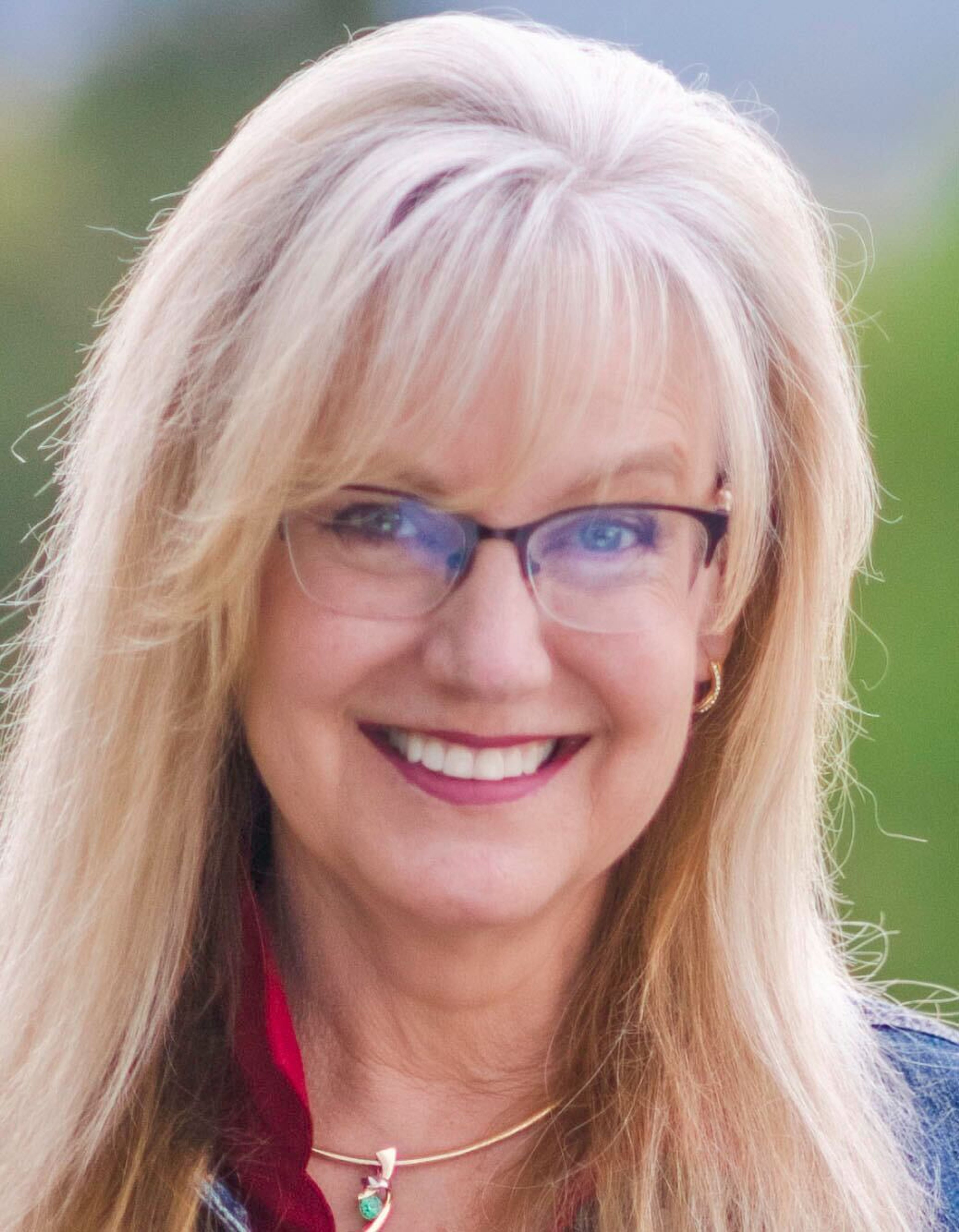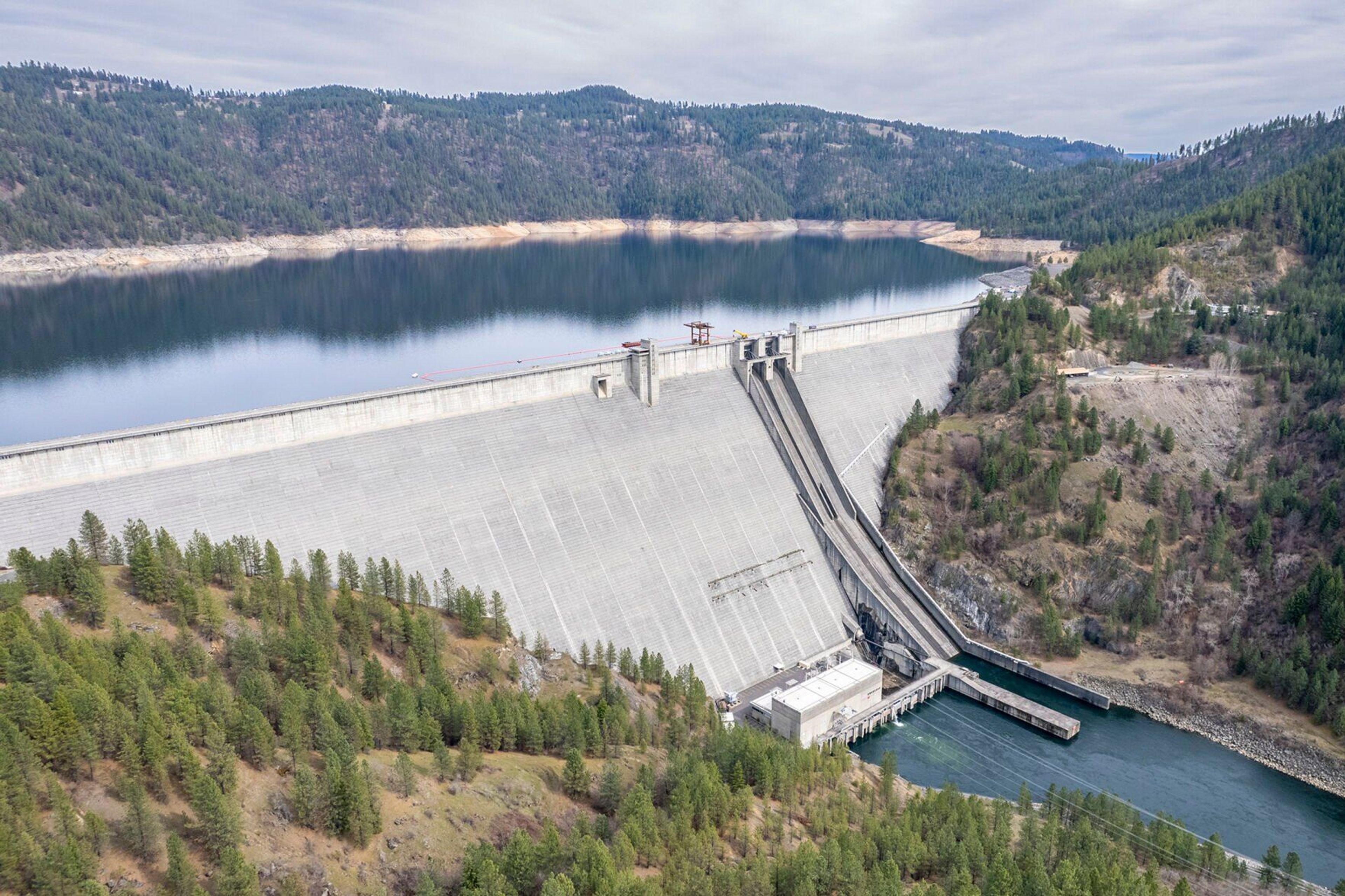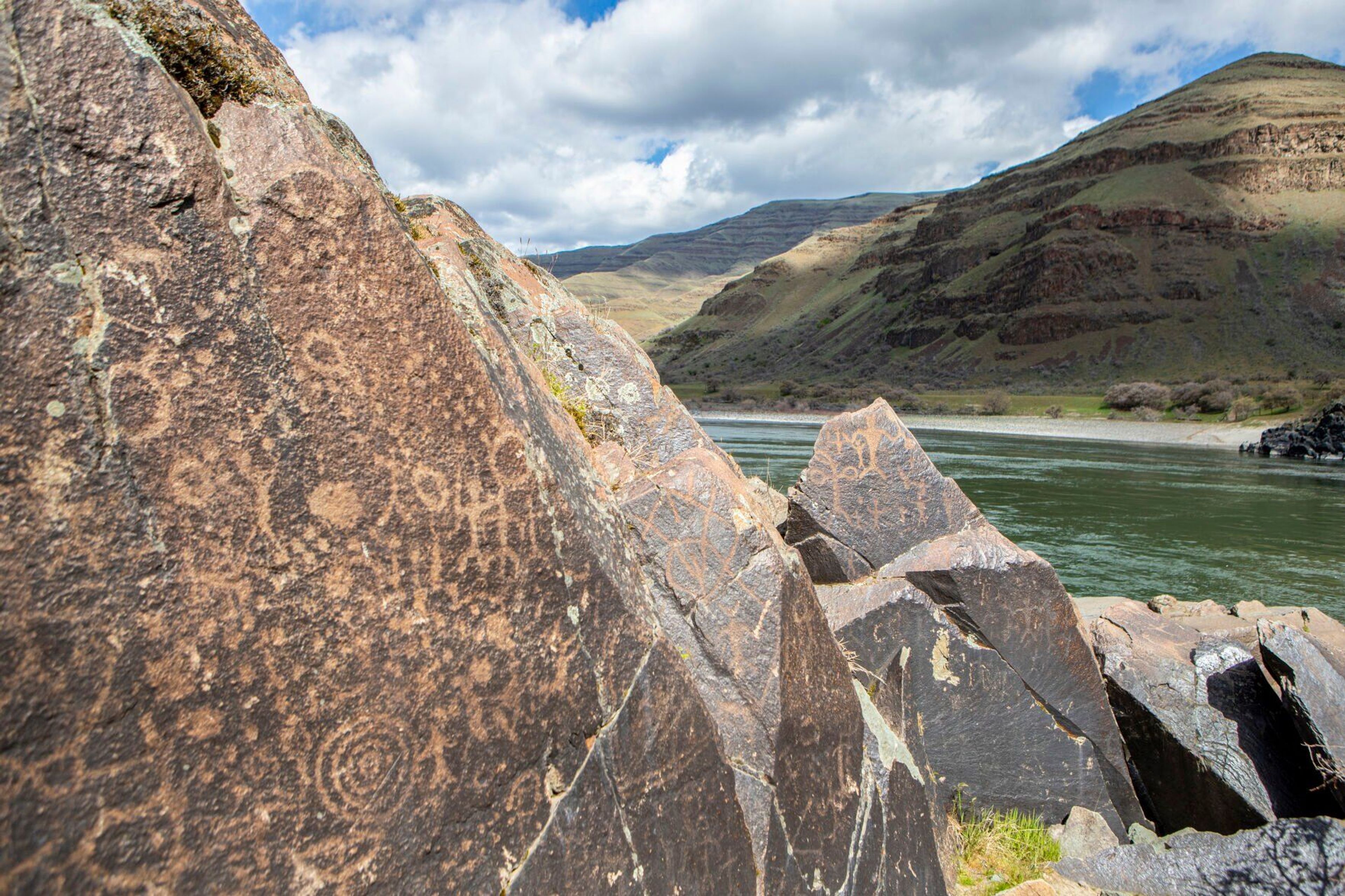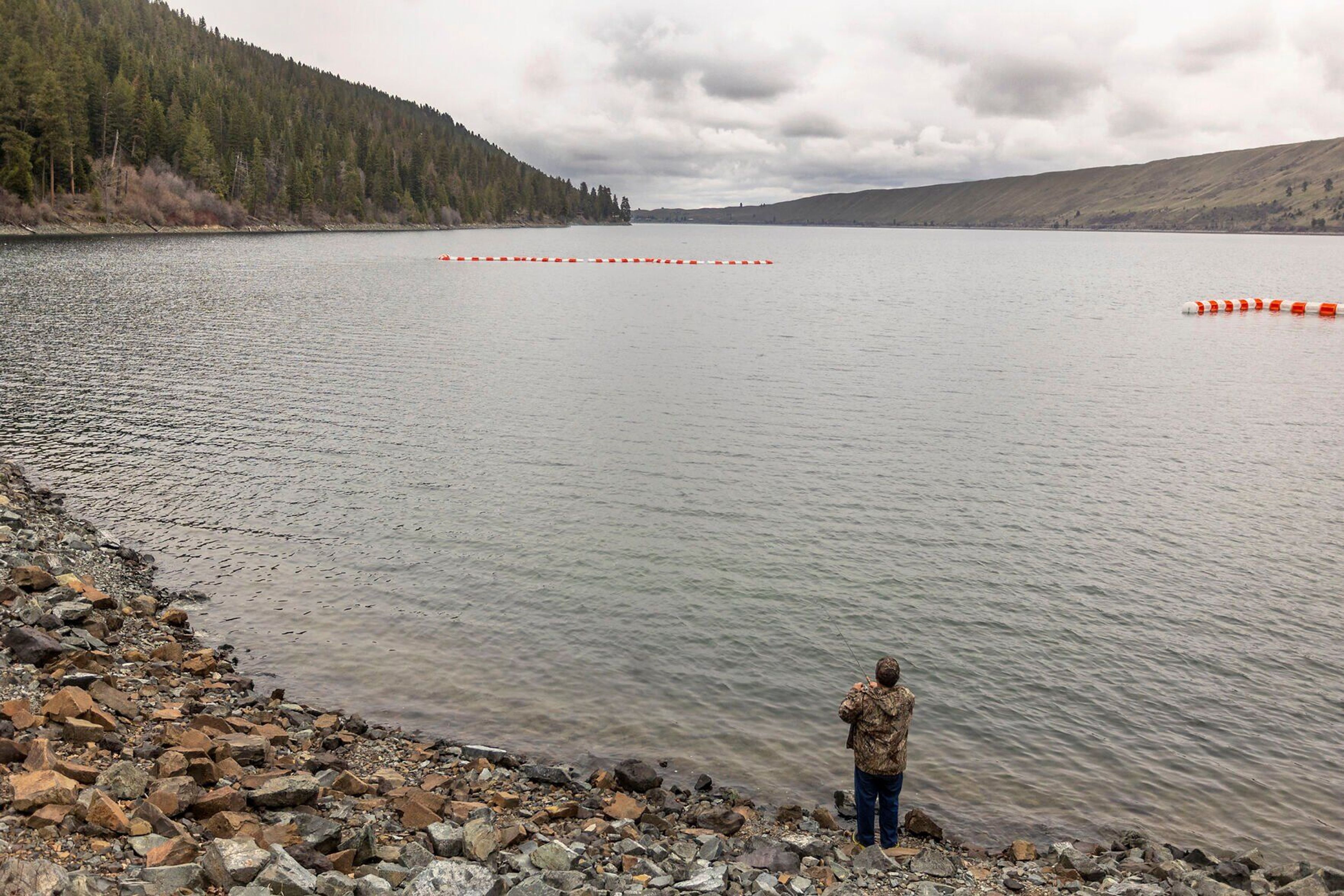Chinook fisheries halted on Columbia River
Shutdown, traced to wild fish impacts, does not affect fishing in Idaho
Washington and Oregon abruptly closed spring chinook and steelhead fishing on the lower Columbia River on Thursday after too many wild spring chinook, including those bound for the Snake River, were caught in tribal fisheries.
The move, which does not affect fishing seasons in Idaho, was made at the insistence of NOAA Fisheries and aims to protect threatened wild spring chinook. But it also shuts down a popular fishing season below Bonneville Dam that was still well under its harvest quota for hatchery produced chinook not under federal protection.
Collectively, state and tribal fisheries impacted an estimated 9.9% of the wild spring chinook run, exceeding the 9% allowed under the Endangered Species Act. But the states had not hit their quota of wild fish. Under a court-approved management agreement, nontribal fisheries are allowed to impact 1.6% of the wild run, and tribal fishers are all allowed to impact 7.4%.
For state fisheries, the impact generally comes from catching and releasing wild fish, a portion of which die. Tribal impact generally comes from harvesting wild fish.
Fisheries managers from Oregon and Washington estimated that nontribal anglers were on pace to hit a wild fish impact rate of 0.71% through Thursday. Tribal fishers from the Yakama, Warm Springs, Umatilla and Nez Perce tribes had an estimated rate of 8.38% in fisheries that ran through May 18.
“The state used about half the allowable ESA (Endangered Species Act) impacts, but we have a duty to manage wild salmon stocks within ESA impact limits, which makes this action necessary for the conservation of upriver spring chinook ESA-listed stocks,” said Ryan Lothrop, Columbia River fisheries manager for the Washington Department of Fish and Wildlife in a news release. “The cold spring and river conditions have contributed to an unusual fish passage and run timing this year. Fishery managers will continue to monitor actual returns closely in the weeks ahead.”
The tribes, through the Columbia River Inter-Tribal Fish Commission, chalked up the overage to the shifting forecast of the run’s strength and better-than-expected fishing conditions in the closing days of the season. The preseason forecast called for 198,000 adult spring chinook bound for areas upstream of Bonneville Dam to return from the the Pacific Ocean. That was downgraded to 139,000 in mid-May, bumped up to 153,000 a week later, and now sits at 143,000.
On May 16, tribal managers estimated they were close to their limit and moved to shut down fishing, which requires 48 hours notice. Over the next two days, harvest rates in the tribal platform fishery were high. By the time fishing closed, they were over the limit. But when the run forecast was bumped up, it looked like the combined state and tribal impact rate of 9% had not been exceeded and nontribal fishing could continue. That changed when the run was downgraded once again this week, putting the total impact at 9.9%.
That run is mostly comprised of hatchery fish. This year’s return of wild chinook bound for the Snake River basin is expected to be poor. Fewer than 10,000 of the federally protected salmon are expected to return to spawning grounds in Idaho, southeastern Washington and northeastern Oregon. When fewer wild fish return, fisheries are more likely to reach the allowable impact rate.
The states and tribes co-manage the spring chinook fishery as well as production of hatchery salmon and steelhead. They operate under the U.S. v. Oregon Agreement that was born out of a 1968 court case in which a federal judge ruled Oregon’s authority to regulate tribal fishing is severely limited. Another case, U.S. v Washington, came to the same conclusion and established that the states and tribes are each entitled to 50% of the annual harvestable surplus of Columbia River salmon runs.
While federal courts retain jurisdiction over the case, the parties agree to multi-year management frameworks that spell out how the fisheries are managed, how the fish are shared and how many fish are released from hatcheries. The states and tribes manage their own fisheries independently but coordinate frequently during fishing seasons. The last agreement was approved in 2018 and runs through 2027. Generally, the parties to the agreement get along, disagreements are minor and wild fish exceedances are rare.
State fisheries managers were frustrated at the closure but sought to focus blame on low wild fish numbers.
Tucker Jones, Columbia River program manager for the Oregon Department of Fish and Wildlife noted fishing is the only cause of mortality that is based on abundance, and other causes like the fish killed by dams or predators does not depend on run strength.
“Rather than pointing fingers at a particular fishery, it’s important to acknowledge the real problem, that there are way too few wild Snake River spring/summer Chinook coming back,” said Tucker Jones, Columbia River program manager for the Oregon Department of Fish and Wildlife in a news release “NOAA’s recent ‘Rebuilding Interior Columbia Basin Salmon and Steelhead’ report acknowledges this, and notes that without aggressive, urgent actions, including restoration of the lower Snake River for Snake River spring/summer chinook, achieving healthy and abundant populations won’t be possible. While fisheries are playing their critical role in the conservation and recovery story, it’s important that the region continue to push other sectors to do the same.”
Stuart Ellis, of the Columbia River Inter-Tribal Fish Commission, made a similar point.
“The overall harvest rates this year are limited due to the forecast for Snake River natural origin spring summer chinook being less than 10% of the total run (this is a provision of our management agreement),” he said in an email message. “So there is a part of this issue that has its origins with our failure to make as much progress with recovery of these fish as we need to make. If we are able to get to a place where we can get closer to recovery, these fisheries will all be a lot easier to manage and we will have a much healthier ecosystem.”
Fishing below Bonneville Dam could reopen as soon as June 15, when the spring chinook run gives way to the summer run.
The closure doesn’t affect fishing seasons above Lower Granite Dam where Idaho and the Nez Perce Tribe have wild fish impact rates independent of those on the Columbia. Both Joseph Oatman, deputy manager of the Nez Perce Department of Fisheries Resource Management and director of its harvest division, and Joe DuPont, regional fisheries manager at the Idaho Department of Fish and Game, said the closure of tribal and nontribal fisheries in the Columbia River and on the Snake River at Ice Harbor and Little Goose dams could lead to more hatchery and wild fish returning to Idaho.
Oatman said given the downriver exceedance, the fisheries in the Salmon River basin could see increased scrutiny from NOAA Fisheries.
“They will be watching closely to make sure we do not exceed the total allowed impacts to ESA listed fish,” he said.
Just like in the Columbia River, state, tribal and federal fisheries managers on the Clearwater, Snake and Salmon rivers monitor and coordinate harvest during open fishing seasons. Spring chinook in the Clearwater River basin are not protected by the Endangered Species Act.
Barker may be contacted at ebarker@lmtribune.com or at (208) 848-2273. Follow him on Twitter @ezebarker.







